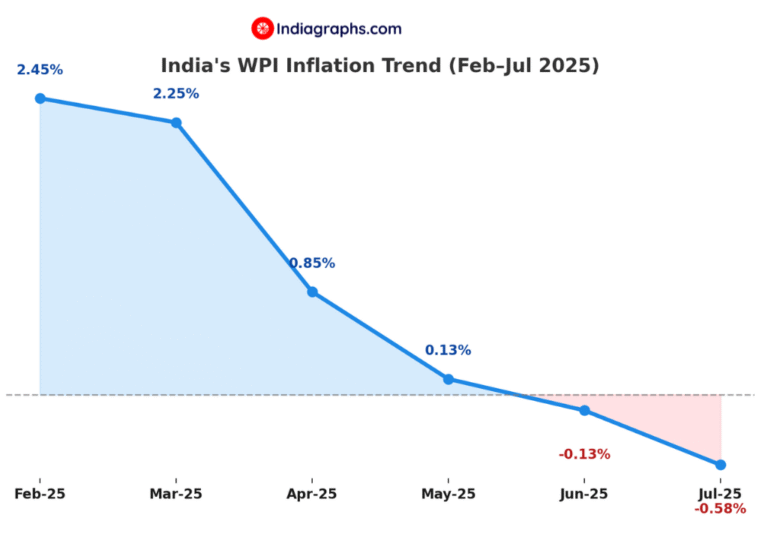Why India Was Called the Golden Bird—Despite Low Gold Production
Uncovering the Cultural, Economic, and Hidden Wealth Behind “Sone Ki Chidiya”
India has long been known as the “Sone Ki Chidiya” — the Golden Bird. But surprisingly, India has never been among the world’s top gold producers.
So, if we didn’t mine the gold, why were we called golden?
This question takes us deep into India’s civilizational wealth, cultural priorities, and a long history of value creation and preservation. Let’s explore.
1. Gold-Rich, Mine-Poor: The Paradox
India’s gold production has always been modest:
| Year | Gold Mined (Tonnes) | Global Share |
| 1900 | ~3 tonnes | <0.5% |
| 2023 | ~1.6 tonnes | <0.05% |
We’ve covered India’s surprisingly low gold production in detail in this story — but clearly, that didn’t stop the gold from flowing in.
Despite this, India holds more privately owned gold than any other country — over 25,000 tonnes stored in households and temples.
So how did this gold get here?
2. A Trade Powerhouse That Attracted Gold
India was once the largest exporter of value-added goods:
- Fine cotton, silk, spices, handicrafts, and precious stones
- In return, India received gold and silver — especially from Rome, Arabia, and China
Roman historian Pliny the Elder famously complained that Roman wealth was draining into India.
According to economist Angus Maddison, India accounted for:
- 24–27% of world GDP for over 1000 years
- Until the 1700s, India and China together made up over half the global economy
3. Temples: The True Fort Knox of India
Indian temples were not just religious centers — they were wealth custodians.
Top Temple Gold Holdings:
| Temple | Estimated Gold | Source |
| Padmanabhaswamy (Kerala) | $22–25 billion | Supreme Court 2011 Vault Discovery, India Today |
| Tirupati (Andhra Pradesh) | 10+ tonnes (bank deposits) | Economics Times, The Hindu |
| Shirdi, Jagannath, Vaishno Devi | ~500–1,000 kg each | Business Standard, Business Times |
India’s Gold Holdings by Sector
To understand how India’s gold is distributed today, here’s a snapshot across households, temples, and financial institutions:
| Category | Estimated Gold Holding | Description | Source |
| Private Households | 24,000–25,000 tonnes | Largest unofficial gold holders globally. Used for weddings, security, and tradition. | World Gold Council (2023) |
| Religious Institutions (Temples) | 3,000–4,000+ tonnes | Stored in temples like Padmanabhaswamy, Tirupati, Shirdi, etc. Often donated and preserved. | Supreme Court, India Today, Economics Times |
| Financial Institutions (Banks + RBI) | ~880 tonnes (RBI) + 300–400 tonnes (GMS deposits) | Gold held as official reserves or deposited by citizens and temples under Gold Monetisation Scheme. | RBI, WGC, Ministry of Finance |
4. Households: The World’s Largest Private Gold Vault
Indian households are estimated to hold 24,000–25,000 tonnes of gold — the largest private reserve in the world. Unlike most nations where gold is centralized in vaults, India’s wealth is decentralized — embedded in families, customs, and communities.
Gold in India is not merely an investment — it’s a social and cultural asset:
- At birth
- At marriage
- In festivals
- As generational security
5. Cultural Currency: Why Indians Don’t Sell Gold Easily
For Indians, gold is less about markets — and more about meaning. Indian gold is:
- Emotionally attached
- Passed down generations
- A safety net for emergencies, not profit
Cultural festivals like Dhanteras, Akshaya Tritiya, and marriages drive cyclical demand — making India the largest gold consumer globally, year after year
6. Why Did Everyone Invade India? For This Gold.
From the Ghaznavids to the British, India was repeatedly invaded — not for land, but for its gold and treasures.
- Mahmud of Ghazni looted Somnath Temple multiple times
- Nadir Shah took the Peacock Throne and Kohinoor
- British colonial loot included gold, diamonds, and taxes
India’s stored wealth was too tempting for the world’s empires.
Conclusion: Why “Sone Ki Chidiya” Still Matters
India didn’t dig up the gold — it earned it.
Through:
- Trade
- Value-added exports
- Cultural preservation
- Generational thrift
The term “Golden Bird” reflected a self-reliant, abundant civilization where wealth wasn’t just mined—it was manifested, earned, and respected.
Sources & References
- World Gold Council (2023). India’s Gold Market: Reform and Growth. PDF
- Supreme Court of India. Padmanabhaswamy Temple Judgment, 2020. PDF
- Economics Times, India Today, Business Standard (Various temple reports)
- Angus Maddison (Historical GDP estimates)
- Ministry of Mines (India), 2023
- Pliny the Elder, Natural History, Book 12
Ready for a Quick Quiz?
Results
#1. Despite producing less than 2 tonnes of gold in recent years, why was India historically called the “Sone Ki Chidiya” (Golden Bird)?
#2. Which of the following best describes India’s private gold holdings today?
Want to see where India stands among the world’s top gold reserve holders? Check out the 2025 global gold rankings.
Or explore how India’s official gold reserves have shifted from 2000 to 2025 — revealing a strategic national transformation.
About Indiagraphs Insights
Indiagraphs is a data storytelling platform focused on decoding India’s economy, policy, and people — one graph at a time.











